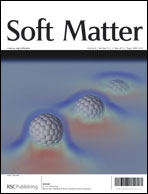In this study, we analyzed cross-linked phenolic resins by using atomistic molecular dynamics simulations. Cross-linked structures consisting of a network of three functional phenols and two functional methylenes with degrees of cross-linking of 0.70, 0.82, and 0.92 were prepared by cross-linking reactions of linear novolac-type phenolic resins in a unit cell under three-dimensional periodic boundary conditions. Uniaxial elongations of the cross-linked structures to a strain of 0.03 were performed at 300 K. At this temperature, all structures were apparently in a glassy state, which was confirmed by the analysis of specific volume as a function of the temperature. The uniaxial elongation did not cause a significant change in the distribution of bonding potential energies (i.e., bond stretching, angle bending, and torsion angle potentials). On the other hand, the change in the potential energies owing to the uniaxial elongation indicated that cross-links suppressed local segmental motions in the cross-linked structure, probably at the region around the linear and terminal phenols, which resulted in an increase in the degree of cross-linking accompanied by a decrease in Poisson's ratio and an increase in Young's modulus.

You have access to this article
 Please wait while we load your content...
Something went wrong. Try again?
Please wait while we load your content...
Something went wrong. Try again?


 Please wait while we load your content...
Please wait while we load your content...